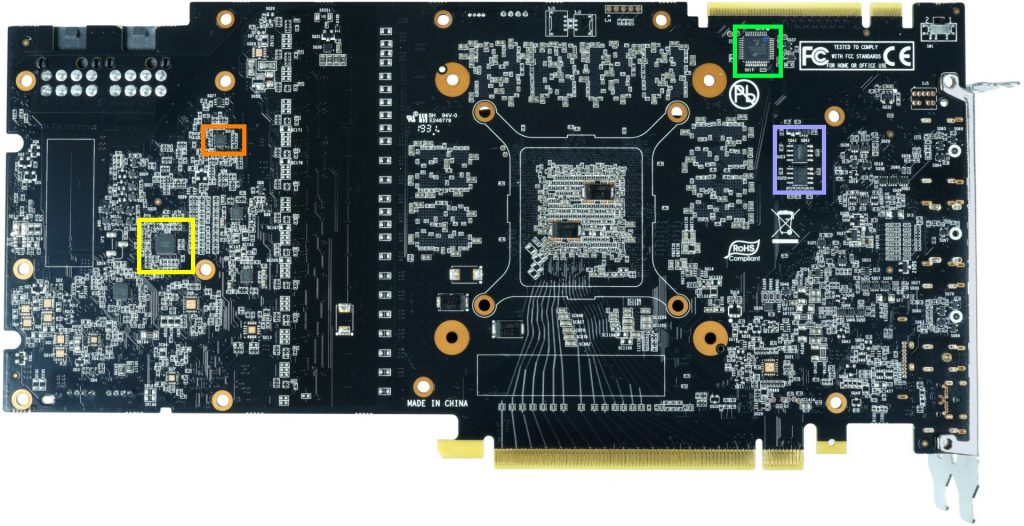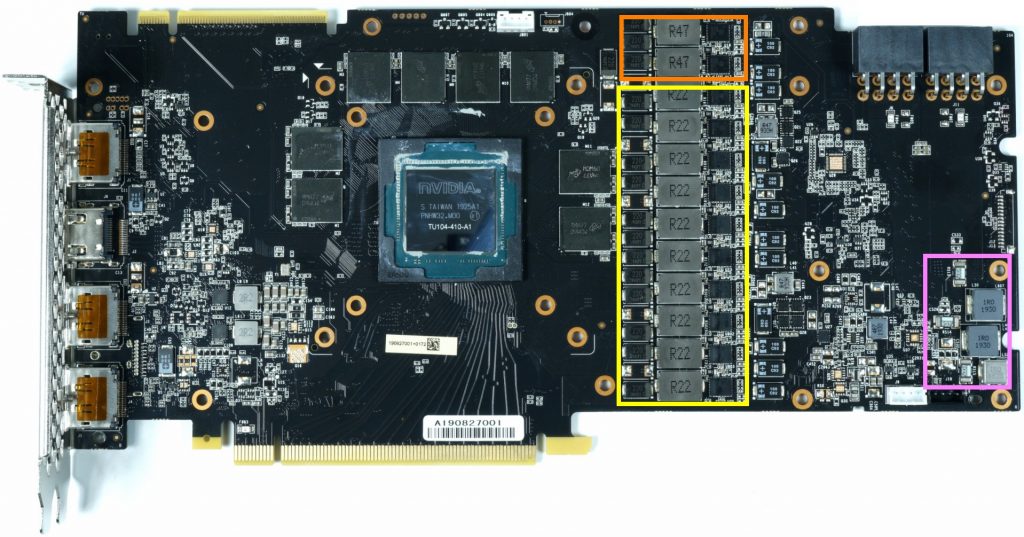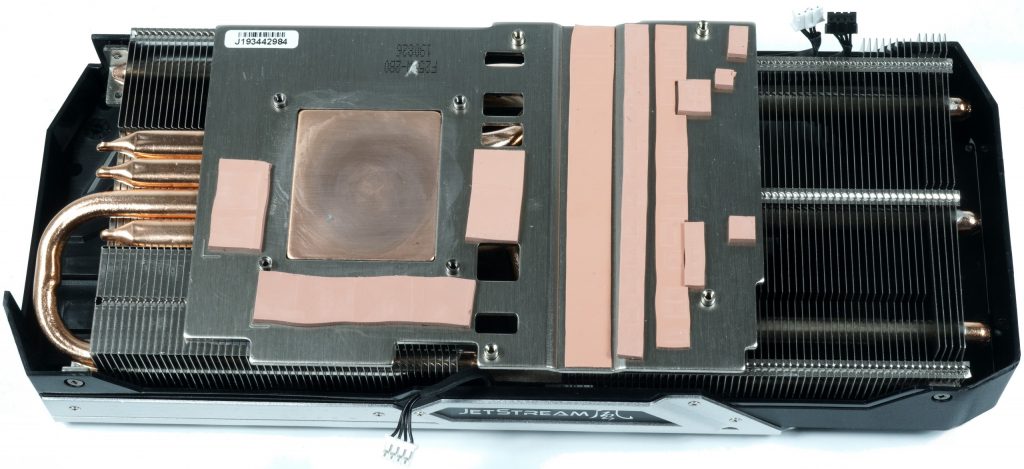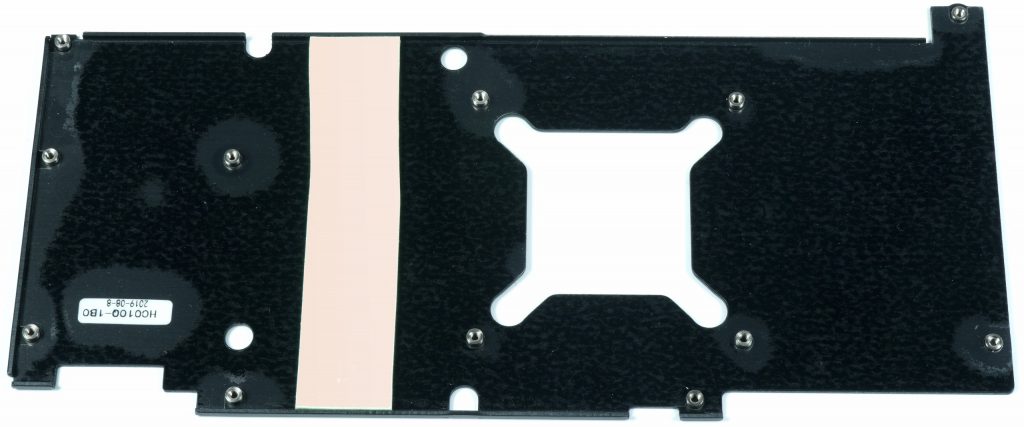Board design: layout and components
Gainward relies on a special 5 +2 phase design for the RTX 2060 Super Ghost, in which the 5 CPU phases (VDDC) each control loop two parallel control circuits. This task is done by the uP9512P from UPI (yellow), which can do just that and also does not require doubler chips or external drivers. The input monitoring takes over simple monitoring chip for the voltages and currents and we also see the ARM processor from Holtek (green) for various controller and control tasks.
Another important element is the PWM controller for the two memory phases (MVDD, orange). This is a uP9529 from UPI, which can control up to 2 phases. In addition, we see the dual BIOS (violet) and the corresponding switch (top right) between the slot panel and the NVLink connector.
On the fron side on the right we see the input filtering and the shunt (pink) below the two 8-pin power supply sockets on the right. The 10 voltage regulator circuits of the 5 phases for the GPU (VDDC, yellow) are realized with simple PowerStages, in which high- and low-side are combined in a shared package. This saves space above all. The NCP30315 used is also more conveniently located in the favorable area, but is completely sufficient. One of these phases is fed directly from the motherboard slot, the other four via the two 8-pin PCIe connectors at the top. The remaining partial voltages are generated by simpler voltage converters, there is no load balancer for the GPU phases.
The spools for smoothing are sufficiently sized at 220 nH (GPU) and 470 nH (memory), a simple inductor DCR is used for telemetry. This makes the board very functional overall and also sufficiently equipped. It would certainly be a bit more expensive, but it doesn’t have to.
Cooler Design: Simple Double Fan Cooler
The aluminum heat sink with the vertically aligned slats sits on a large base plate with an extra copper GPU heatsink. Here, GPU, memory and voltage converters are cooled separately. For optimal distribution of waste heat, Palit relies on four thick 8 mm heatpipes made of unnickelplated copper composite material. For the necessary air flow, use two 9.5 cm fans with 11 rotor blades each. A little RGB lighting does not help with cooling, but at least provides optical assistance.
The card also uses a backplate, which is also thermally coupled with a thick thermal pad with the board in the area of the voltage converters. This would work even better if the plastic film on the inside had at least been cut out in this area.
| Fan | 2x 9.5 cm rotor diameter 11 rotor blades High throughput, turbulence |
| Cooling fins | Vertically |
| GPU Cooling | Copper heatsink |
| Memory cooling | Common base plate |
| VRM cooling | Common base plate |
| Pads | 1 mm (memory, VRM) |
| Fan operation | Optionally active or semi-passive mode 812 rpm minimum speed / fan stop |






































Kommentieren